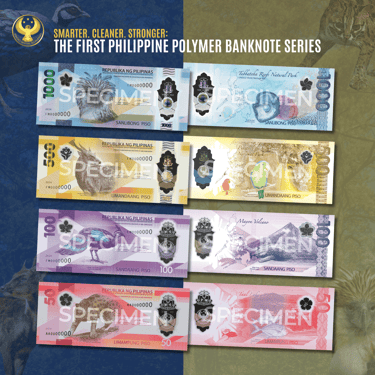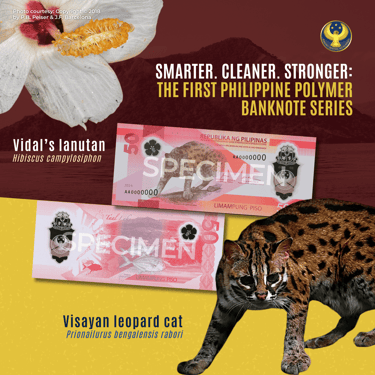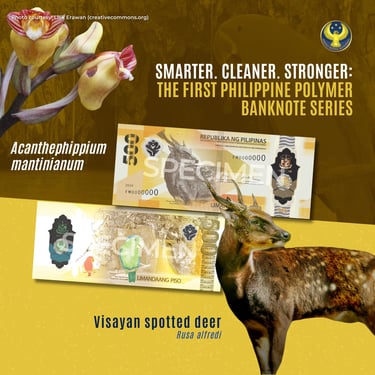
Polymer Banknote Series
Take a look at the Philippines' first polymer banknote series that are smarter, more durable and more sustainable than previously released banknotes.
AWARENESS
2/5/2025
The Bangko Sentral ng Pilipinas (BSP) launched the First Philippine Polymer (FPP) Banknote Series on 19 December 2024, featuring the 1000-, 500-, 100-, and 50-piso denominations. These polymer banknotes co-circulate with their paper counterparts.




Stronger
Polymer banknotes are more durable than paper banknotes, lasting two to five times longer. On average, paper banknotes last for 1.5 years, while polymer banknotes last for as long as 7.5 years.
Cleaner
Due to its smooth and non-absorptive surface, the polymer banknotes are resistant to water, oil, and dirt. Polymer banknotes can also be sanitized with less risk of damage.
More Secure
The polymer banknotes are smarter than paper banknotes, as they have more sophisticated security features, making them harder to counterfeit.




50-Piso
The 50-piso polymer banknote showcases an endemic and threatened flora and fauna in the Philippines—the Visayan leopard cat and Vidal’s lanutan. It also shows on the reverse side the Taal Lake and the native maliputo fish.
500-Piso
The 500-piso polymer banknote also features a pair of endemic and threatened flora and fauna in the Philippines—the Visayan spotted deer and Acanthephippium mantinianum. On the reverse side are the Puerto Princesa Subterranean River National Park and the native and critically endangered blue-naped parrot.
100-Piso
The 100-piso polymer banknote highlights the majestic Palawan peacock-pheasant together with Ceratocentron fesselii—an endemic and critically endangered orchid in the Philippines. It also shows on the reverse side the Mayon volcano and the native and endangered whale shark or butanding.
1000-Piso
The 1000-piso polymer banknote features not one but two of the country’s symbols—the Philippine eagle and the sampaguita. It also shows on the reverse side the Tubbataha Reefs Natural Park and native South Sea pearl.
Copyright 2026 Luzon Development Bank. All rights reserved.
Luzon Development Bank is a supervised bank by the Bangko Sentral ng Pilipinas with telephone number (02) 8811-1277 and email address at consumeraffairs@bsp.gov.ph.


